Toyota launches Hilux BEV, confirms FCEV variant
Like most electric pickup trucks on the global market, the Hilux BEV, or the Hilux Travo-E as Toyota brands the model in Thailand, features a dual-cab layout. Toyota launched it exclusively with all-wheel drive, specifically with an 82 kW front motor producing 205 Nm of torque and a 129 kW rear motor with 269 Nm of torque. The company states a system power of 144 kW but has yet to disclose the combined torque figure.
Theoretically, the system performance of the electric Hilux with all-wheel drive could be higher, but it is likely limited by the software for efficiency reasons.
Toyota uses a 59.2 kWh lithium-ion battery pack that allows the electric pickup truck to travel a mere 315 kilometres, as per NEDC. In Europe, the company estimates an even lower range of about 240 kilometres, as per WLTP. The battery pack has an operating voltage of 296 volts and supports charging at up to just 11 kW (AC)/125 kW (DC), with a 20-80% session taking at least 30 minutes.
A familiar size with electric substance
The Toyota Hilux BEV measures 5.32 metres in length, 1.86 metres in width, and 1.80 metres in height, giving it the robust proportions expected of a full-size pickup. The vehicle’s wheelbase is 3.09 metres, providing stability and balanced handling both on and off the road.
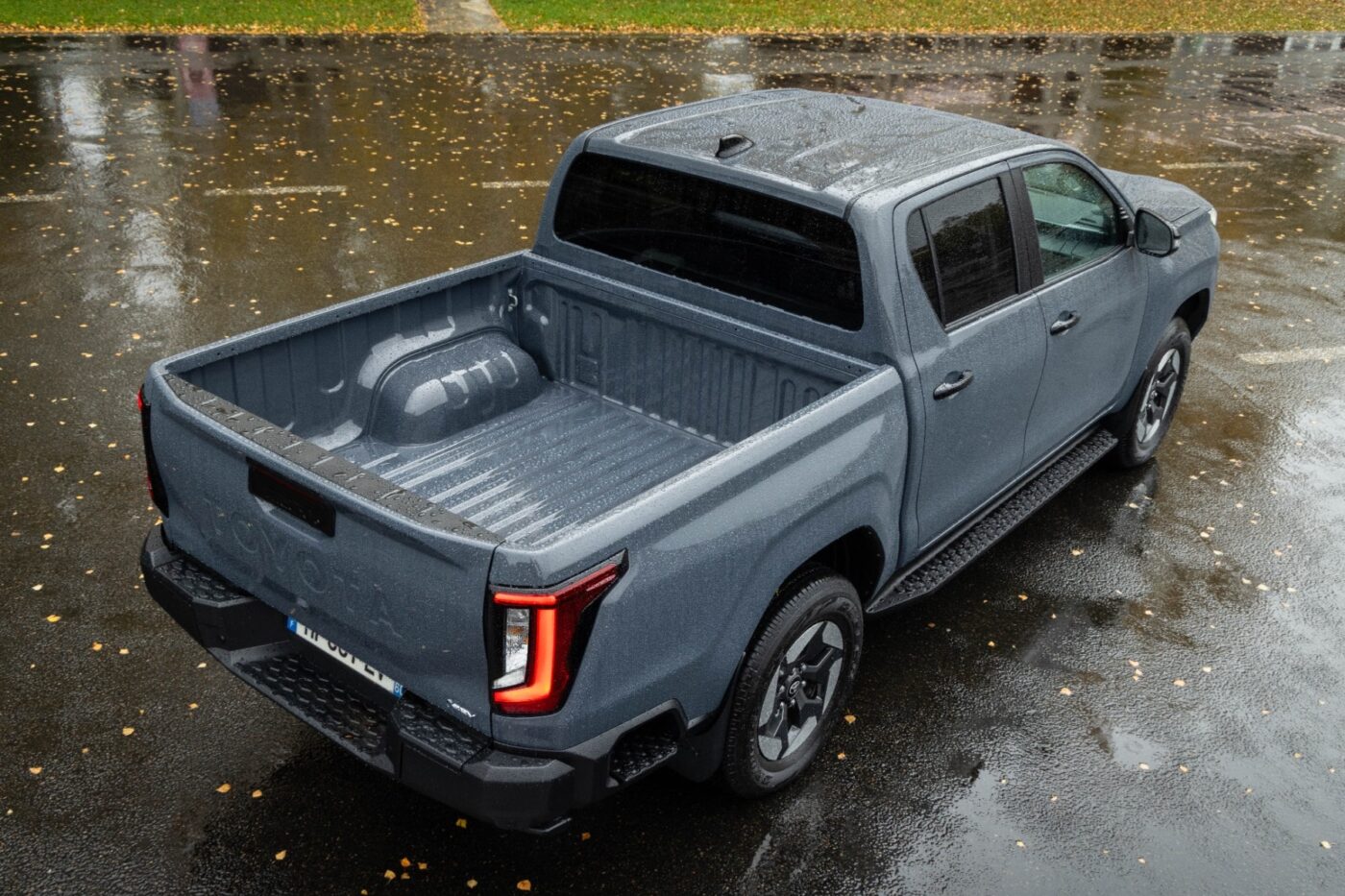

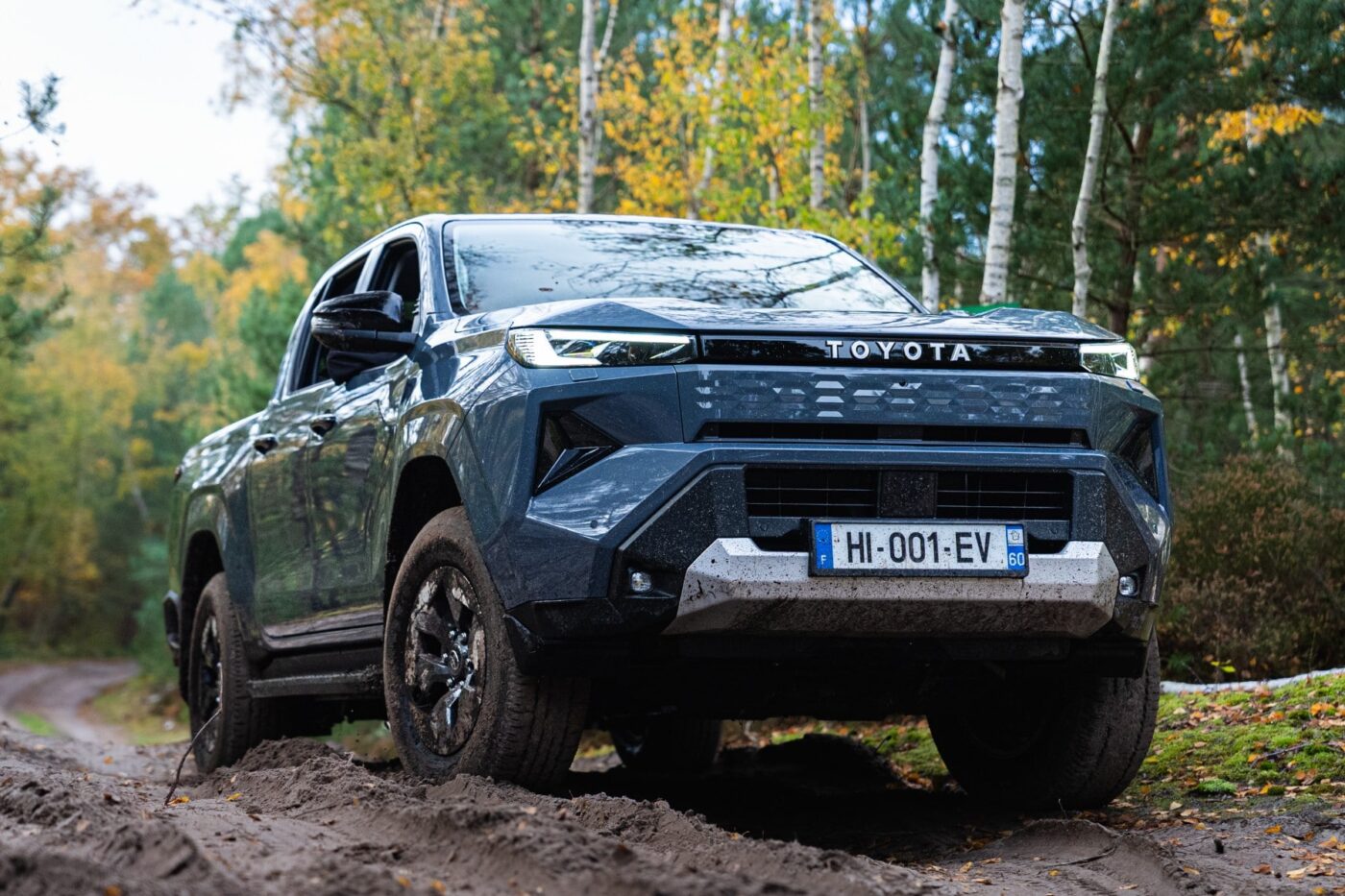
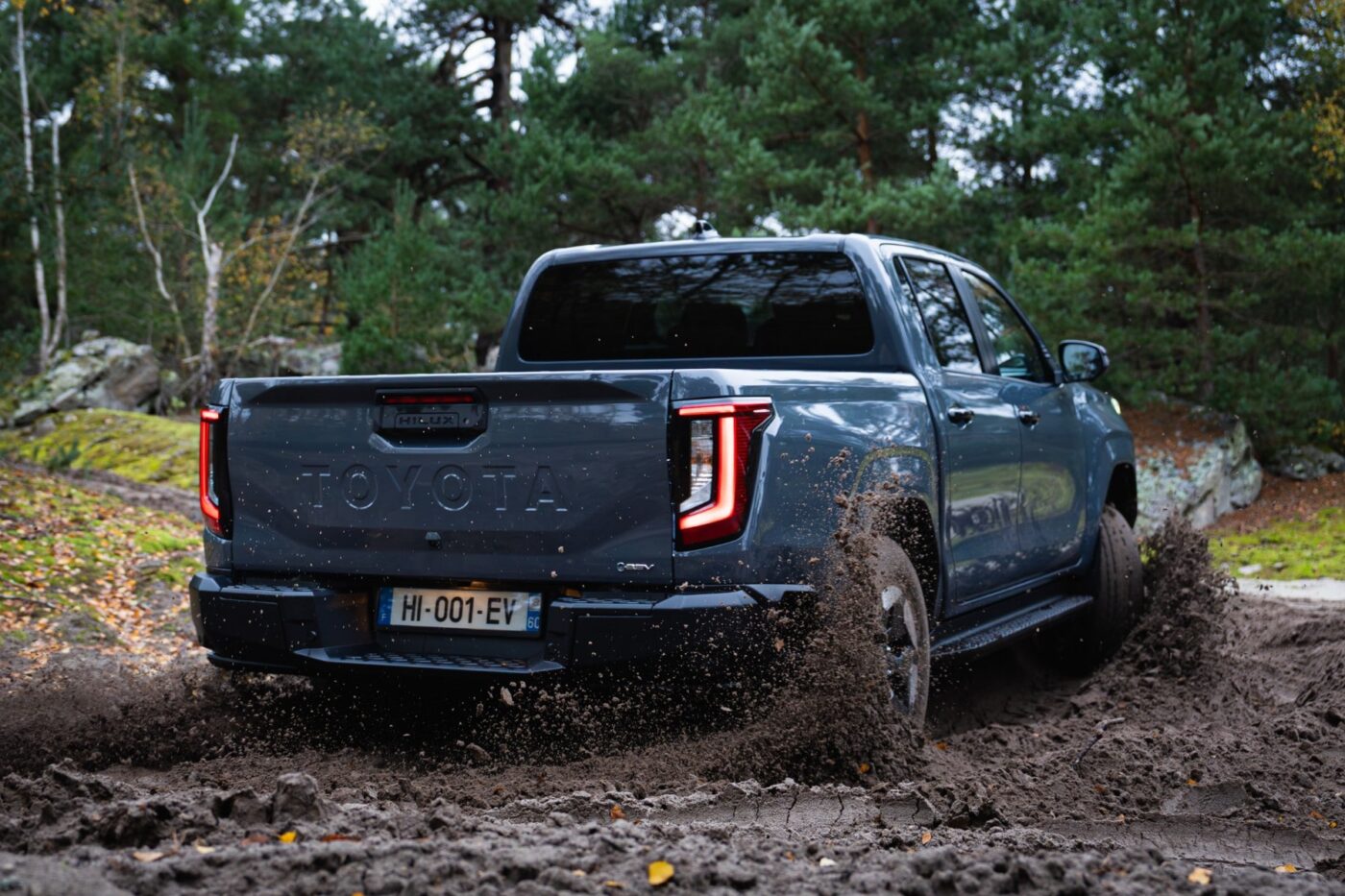
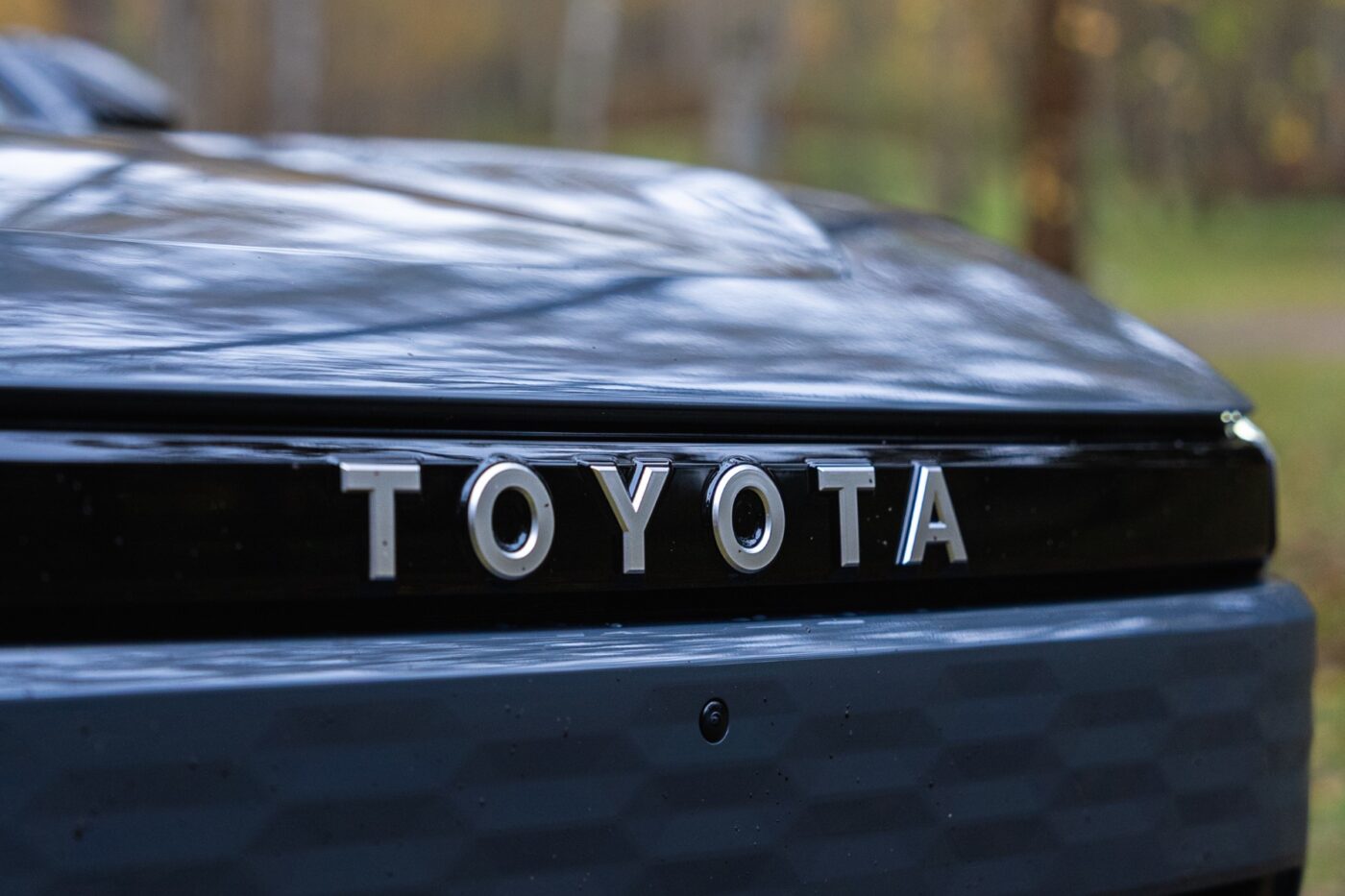


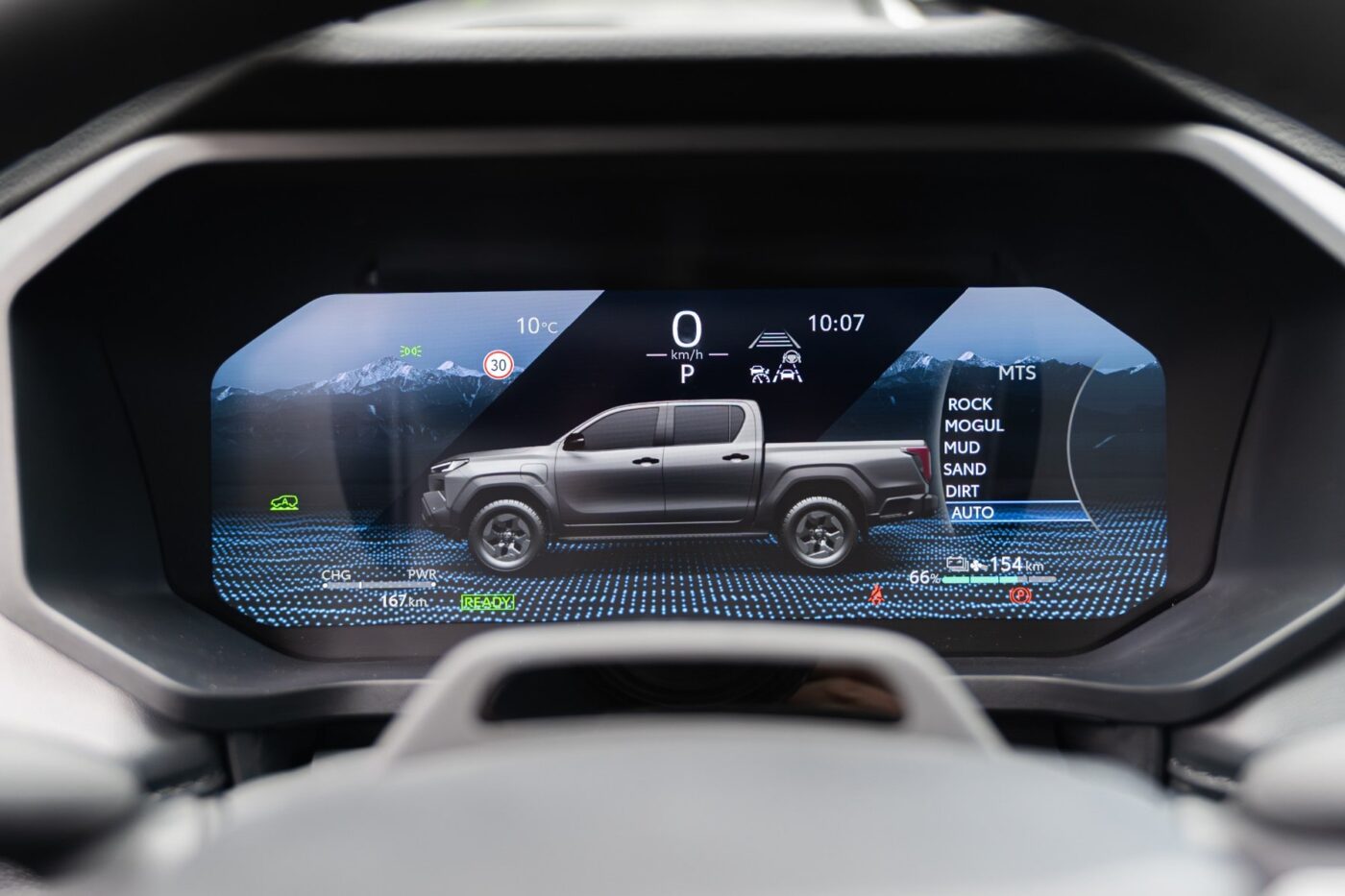
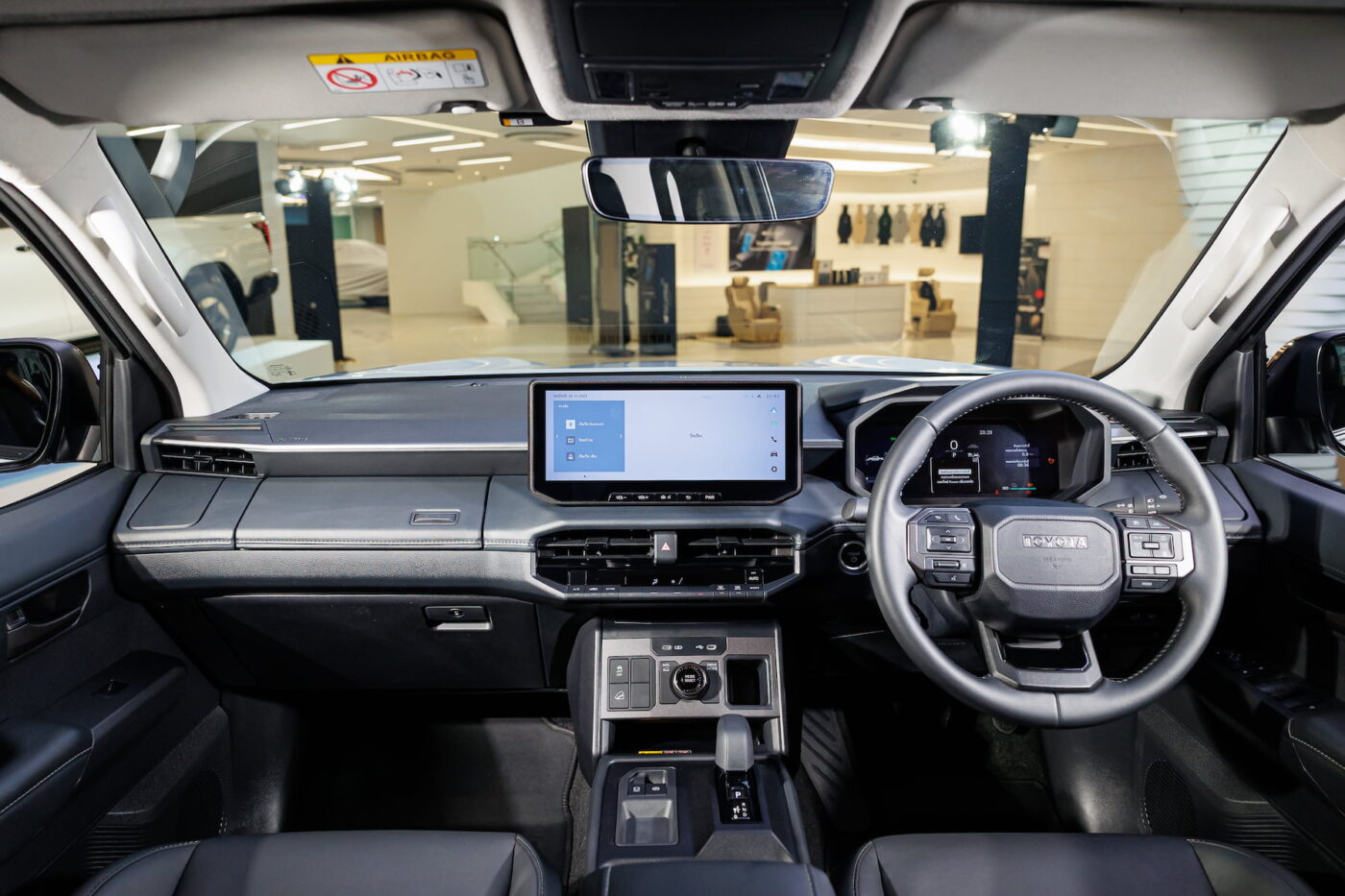

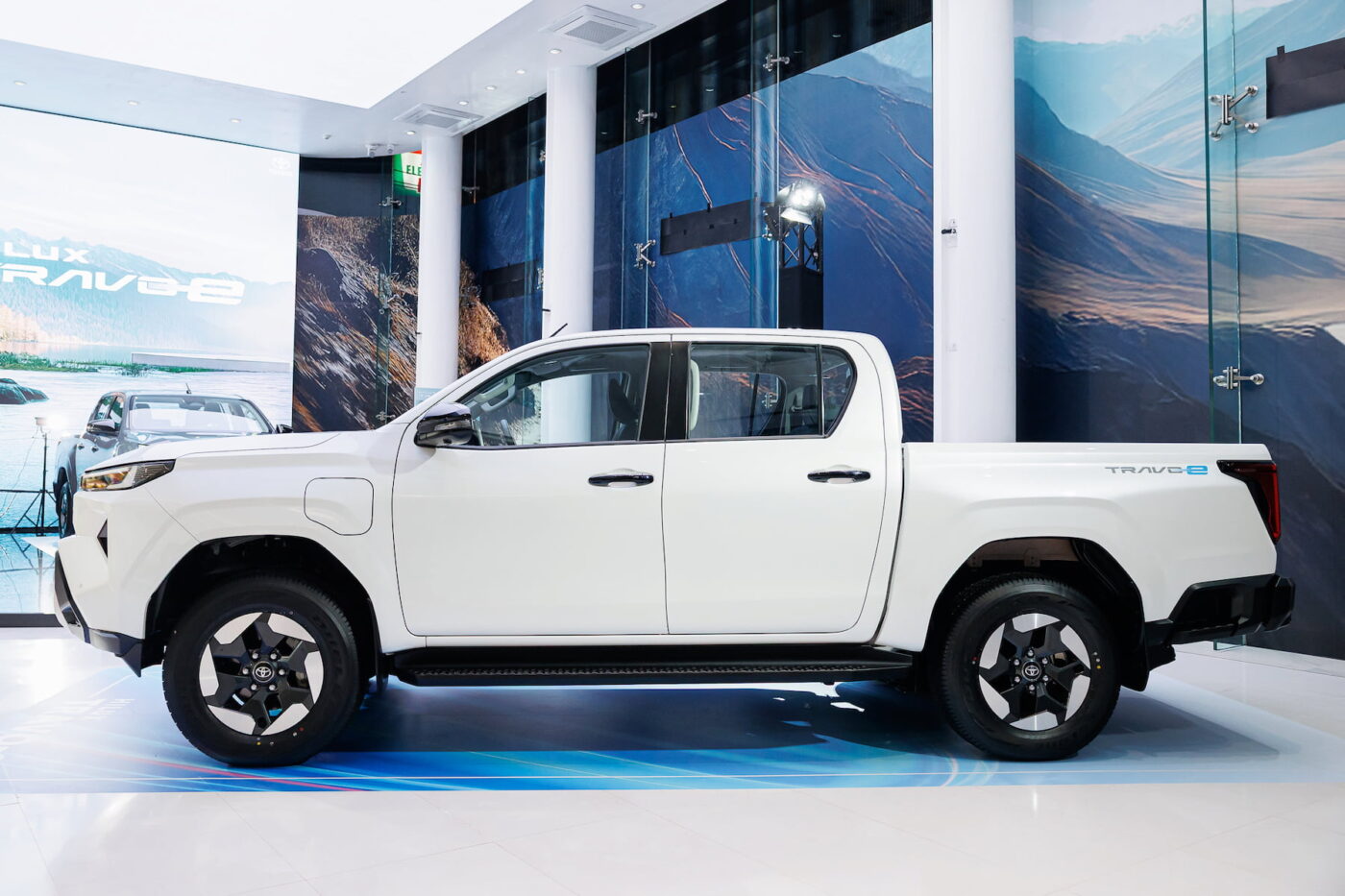
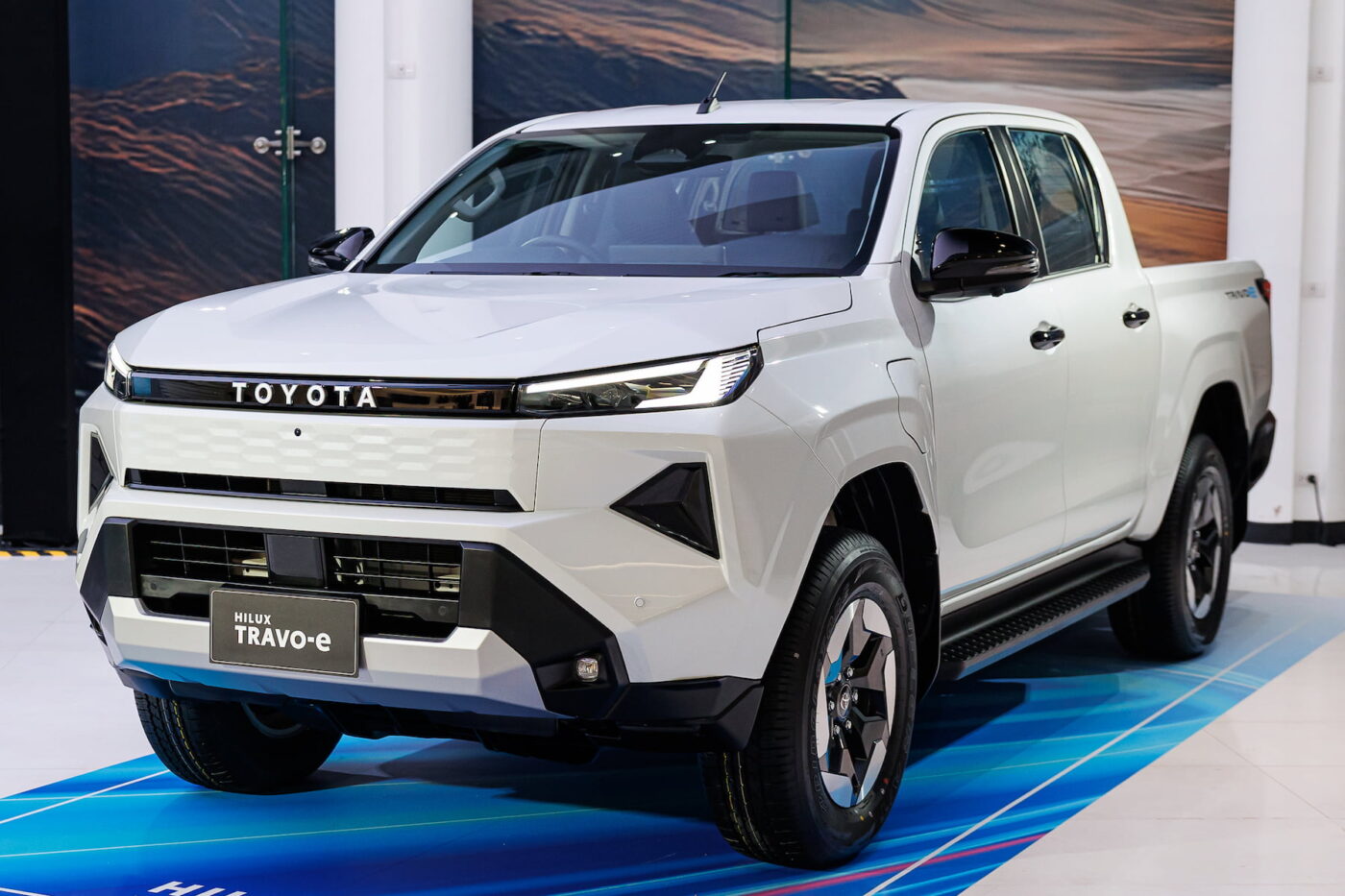
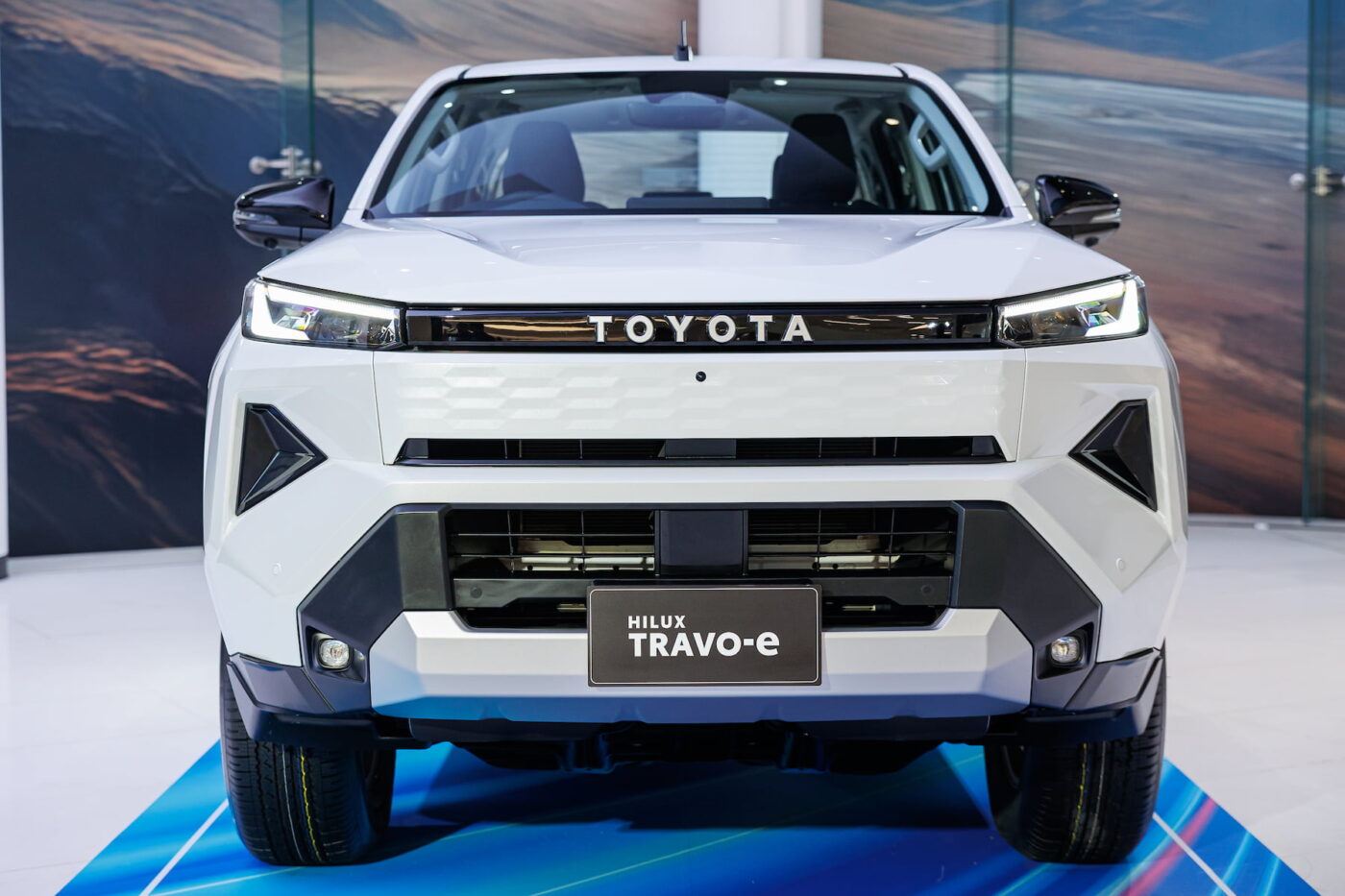


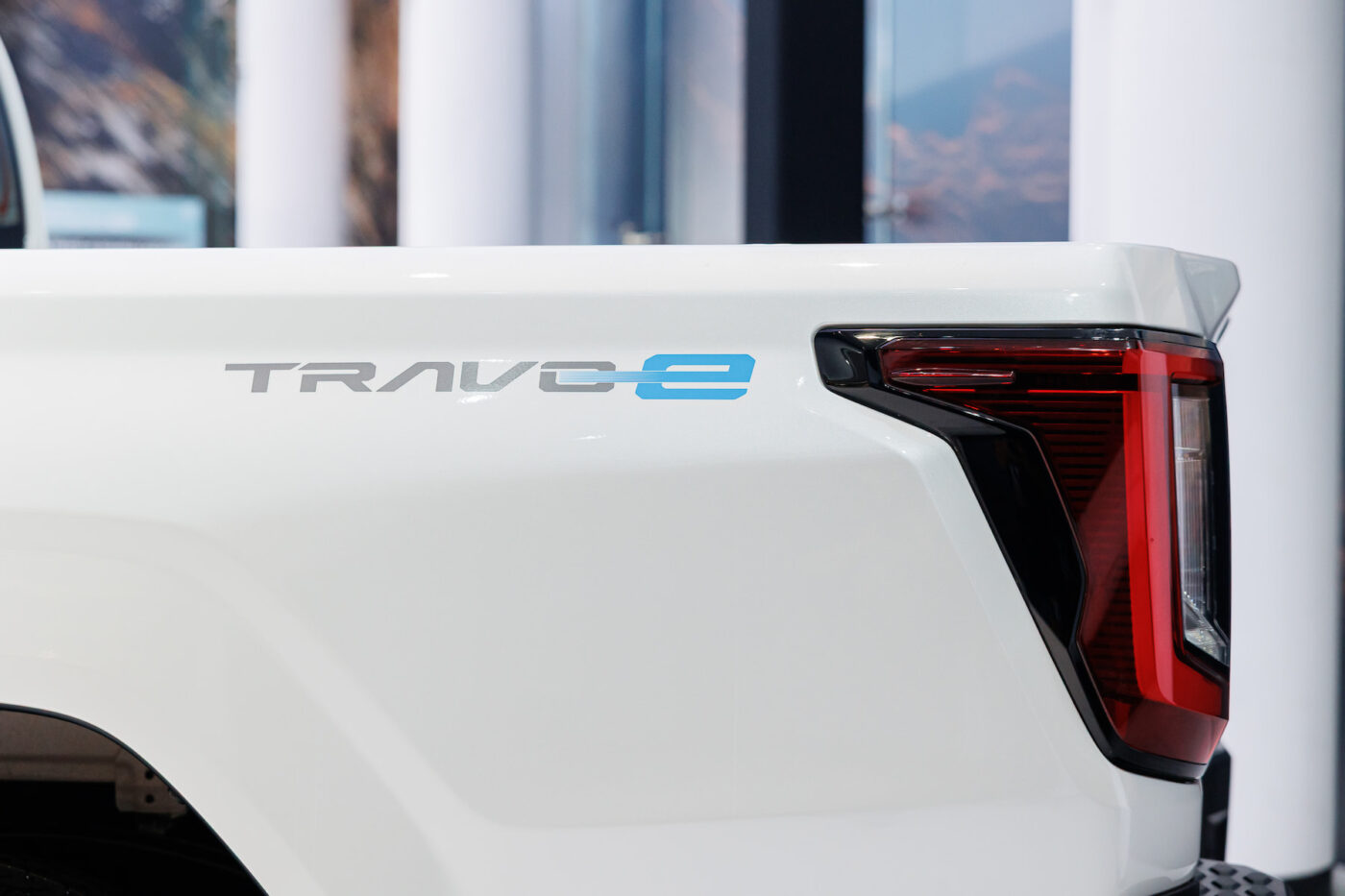
The cargo bed offers practical dimensions of 1.56 metres in length, 1.54 metres in width, and 0.48 metres in height, ensuring ample space for equipment and payload. The Hilux BEV features a turning radius of 6.4 metres, allowing for agile manoeuvring in tighter spaces despite its overall size.
The Hilux BEV offers 715 kg of payload capacity and 1,6 tonnes of towing capacity. In comparison, its diesel-powered ICE donor can haul over one tonne and tow three and a half tonnes, but these trade-offs are not unusual in this segment. The range and charging specifications, though, seem behind industry standards.
Built for work, ready for the rough
Toyota promises excellent off-road performance, though, with up to 50 cm of wheel articulation and up to 70 cm of water-wading depth. The company secures the battery pack and drive units with an underbody skid plate called ‘Diamond Guard,’ ensuring protection from rocks and debris, and a high ground clearance of 2.15 m further enhances protection during off-road driving. To accommodate the rear motor, it had to replace the solid rear axle with a De Dion setup.
The Hlux BEV features a design nearly identical to the latest ICE model. Toyota has covered a noticeable part of the upper grille area with a body-coloured cover featuring a hexagonal motif and used specially designed 17-inch alloy wheels to reduce drag. The company has integrated the charging port into the left-side front quarter panel. A Thailand-only “Travo-e” inscription along the sides of the cargo bed and a “Beyond Zero” badge on the tailgate round up the design changes. Inside, save for the EV-specific functions and readouts in the 12.3-inch cockpit displays, the Hilux BEV has no visual differences.
Small numbers, big expectations
The BEV is a niche variant in the ninth-gen Hilux range, with Toyota planning to manufacture only 5,000 units annually. The company is targeting an annual sales volume of 500 units in Thailand and will export the remaining volume. For reference, Toyota sold 66,244 units of the ICE Hilux in the country last year and 38,331 units in Europe.
Toyota plans to start sales of the Hilux BEV in Thailand in December. The company offers the electric pickup truck in only one trim, priced at 1,491,000 baht, making it 67 per cent more expensive than the base dual-cab Hilux Travo (ninth-gen Hilux) with a diesel engine. It plans to launch the electric pickup truck in European markets early next year and in Australia by June.
The Japanese automaker did not disclose any details of the Hilux FCEV other than saying it will offer them in Europe and Oceania from 2028.
global.toyota, toyota.co.th (specs), autolifethailand.tv (sales in Thailand), toyota.co.th (sales in Europe)

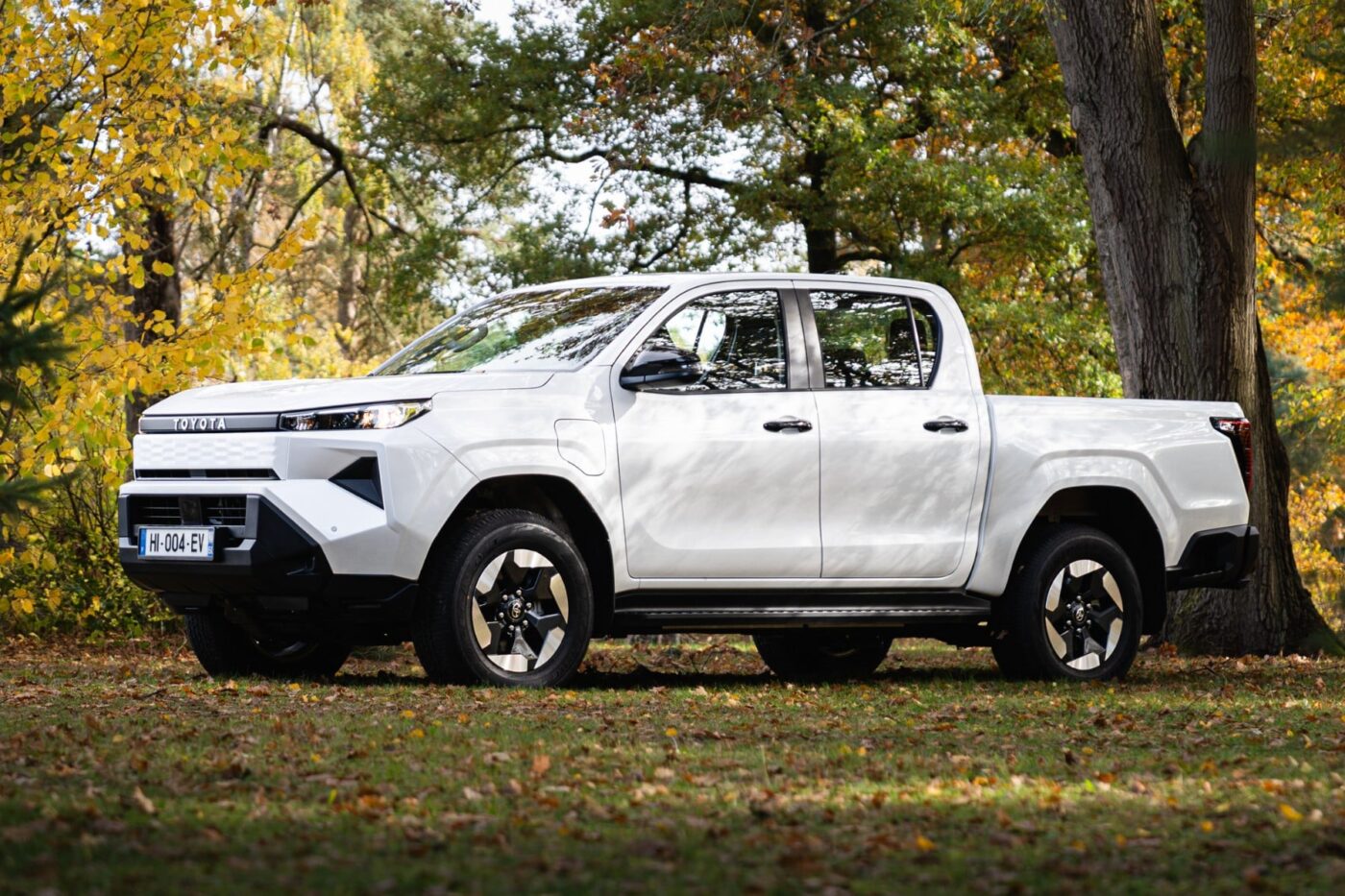

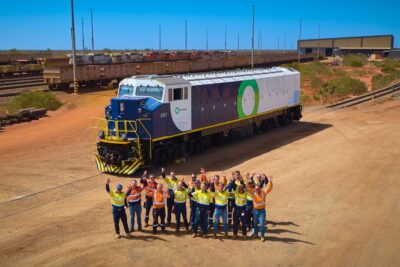
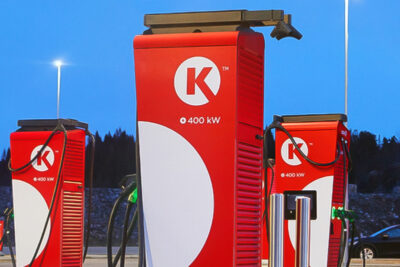
0 Comments